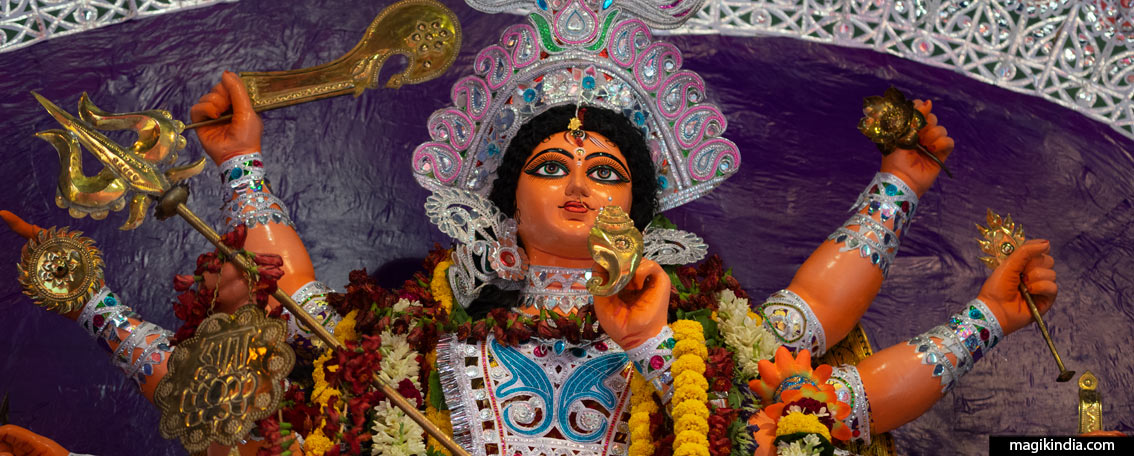
Navaratri, the festival of the Divine Mother
Navaratri, along with Mahashivaratri, is one of the leading Hindu festivals, celebrated with great fervour throughout India. In Sanskrit, Nava means ‘nine’ and ratri means ‘nights’; the Navaratri festival lasts for nine nights and ten days. Its purpose is to celebrate the Universal Mother, or Shakti: the primordial and creative force.
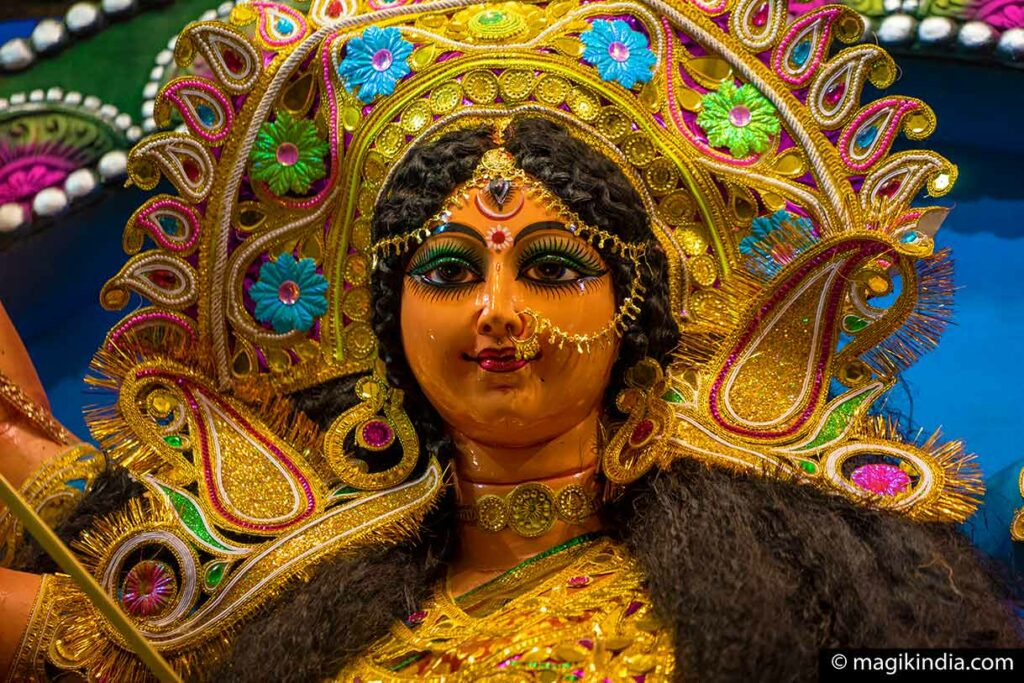
According to Hindu calendar, Navaratri is celebrated four times a year:
- Magh Navratri (January – February),
- Vasant Navaratri, also known as Spring Navaratri (March – April),
- Ashad Navratri (June -July),
- and Shardiya Navratri, also known as ‘Maha Navaratri’, the big Navaratri, (September – October).
Out of these four Navratris, Shardiya Navratri in Autumn, is especially considered important and auspicious by devotees.
Navaratri in Tamil Nadu
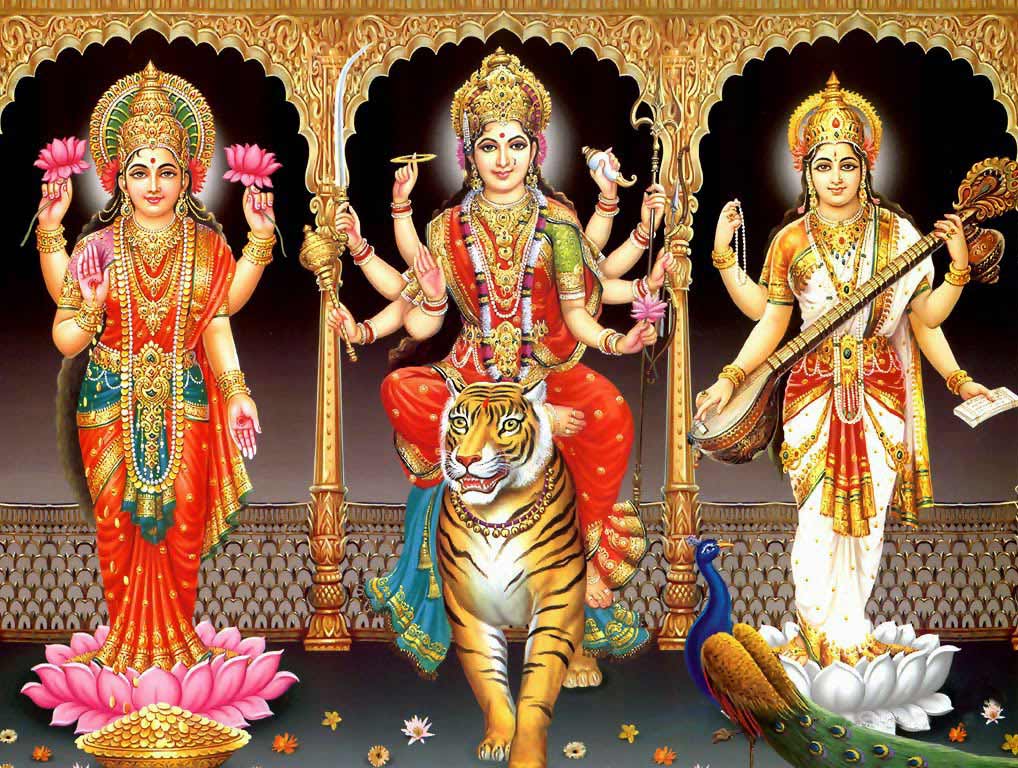
In Tamil Nadu, the ‘Shakti’ is personified by three different goddesses during Navaratri:
The first three nights of Navaratri are dedicated to Durga, the warrior goddess, whose mount is a lion or tiger. She symbolises the forces of destruction and the impurities of the mind.
On the next three nights, Lakshmi is worshipped. Seated or standing on a lotus, gold coins pouring from her right hand, she symbolises spiritual prosperity and plenty.
The last three nights are dedicated to Saraswati, who holds a veena (a stringed instrument) and symbolises art and wisdom.
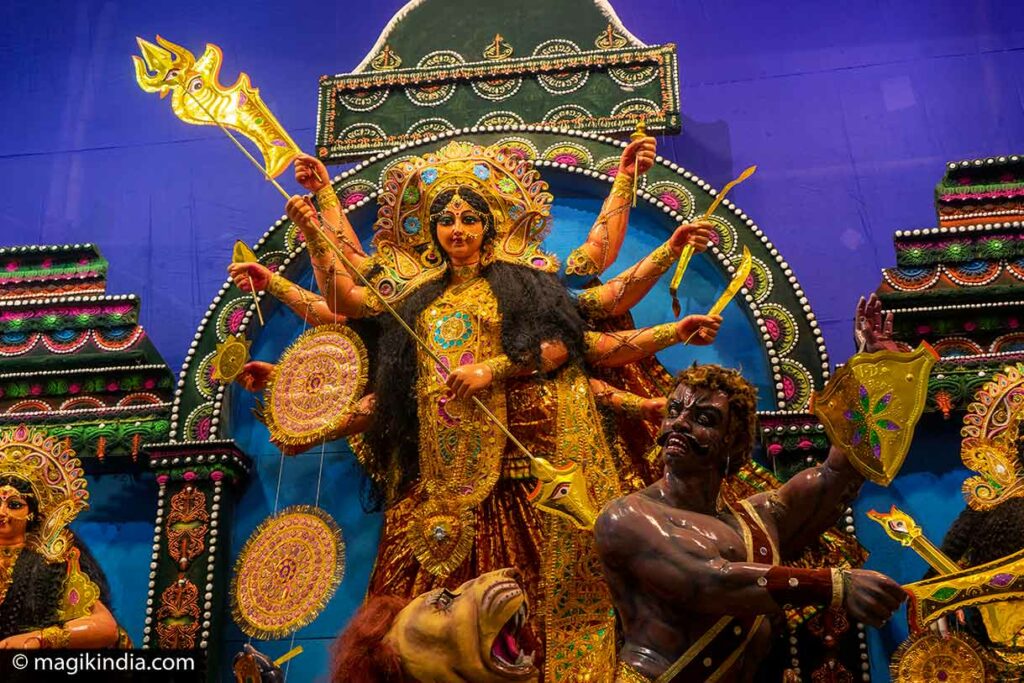
The tenth day is commonly called Vijayadashami, the day of victory of light over darkness.
Symbolically, it means you have conquered all the qualities of the previous 9 days. It is a day of good omen for starting a new job or a new business.
[ Navaratri procession in Udaipur ]
“Durga Puja” Festival
In some North Indian states, especially West Bengal and its capital Kolkata, Navaratri is known as Durga Puja, or Durgotsava (Festival of Durga). This takes place on the last five days of Navaratri.
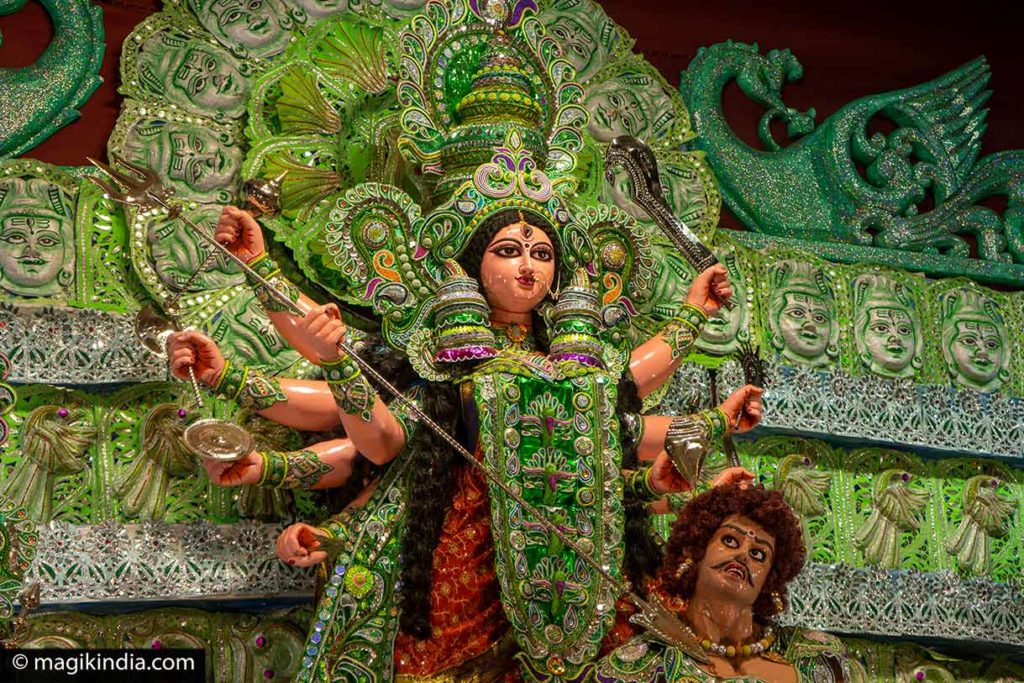
Durga Puja marks the victory of the goddess Durga over the buffalo-demon Mahishasura and so symbolises the triumph of good over evil.
[ Durga statues workshop ]
Dussehra, the Victory of Rama
Vijayadashami, the tenth day of Navaratri is called Dusserha or Dasara in some parts of India, where it associated with Rama.
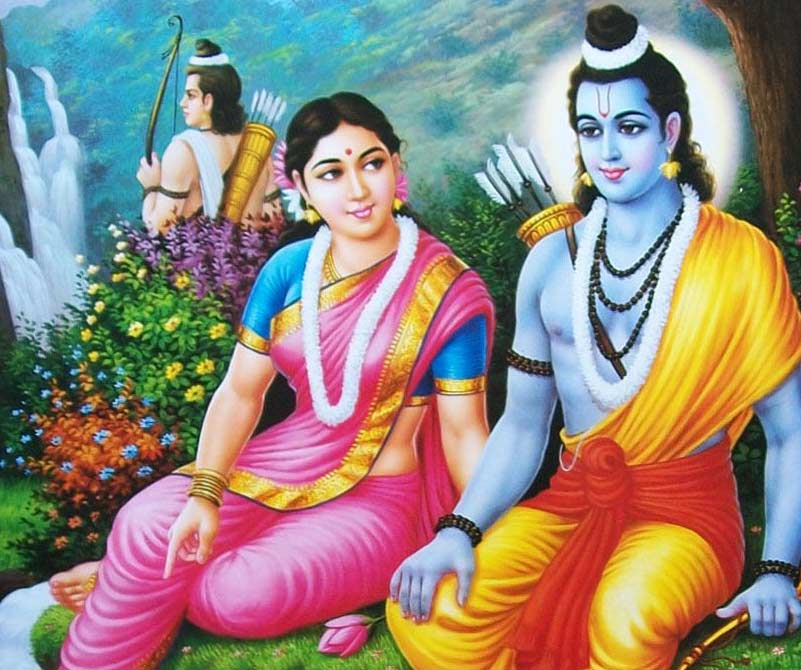
When the demon king Ravana captured Sita, wife of the god Rama, and carried her off to his kingdom in Sri Lanka, a fierce battle ensued. But despite all his efforts Rama could not defeat Ravana.
To vanquish the demon, Rama decided to perform a puja (ritual) to invoke Shakti (the goddess Durga).
He needed 108 blue lotus flowers for the ceremony but could only find 107. As the puja could not be performed without the exact number of flowers, he decided to lay one of his blue eyes instead at Durga’s feet. Satisfied by this mark of devotion, the goddess granted him blessings and he was able to defeat the ten-headed Ravana and rescued Sita.
Ever since, the victory of good over evil has been celebrated on Dussehra.
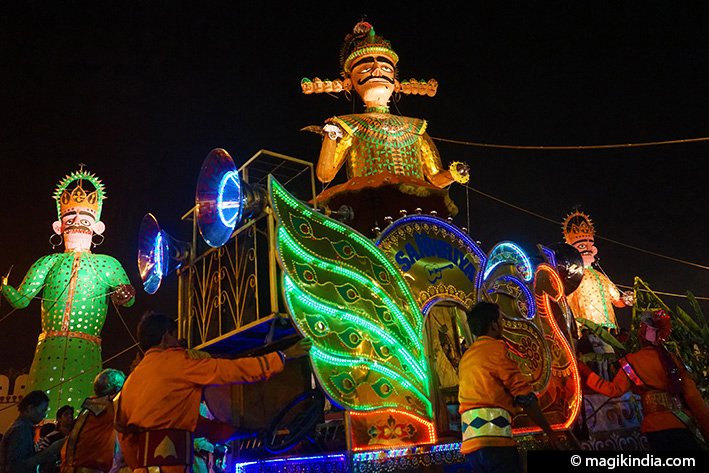

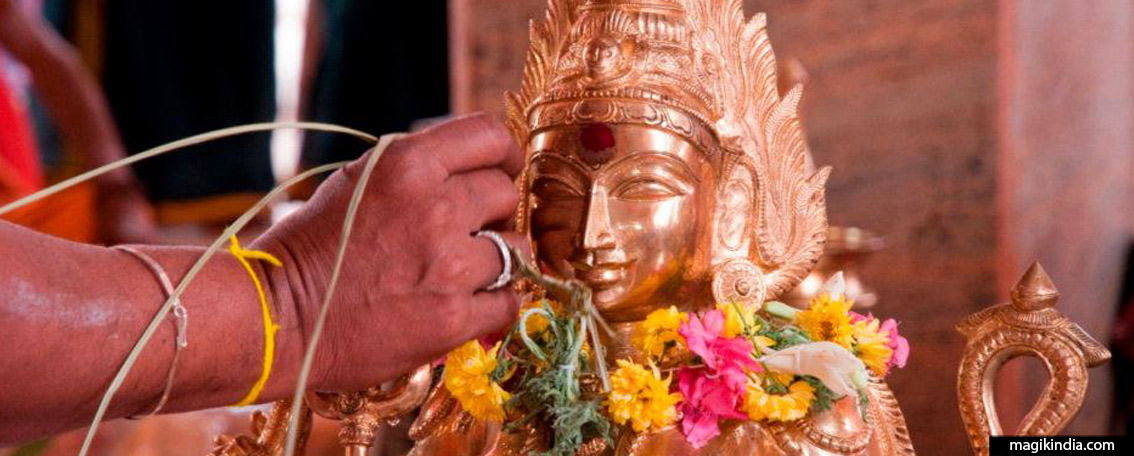
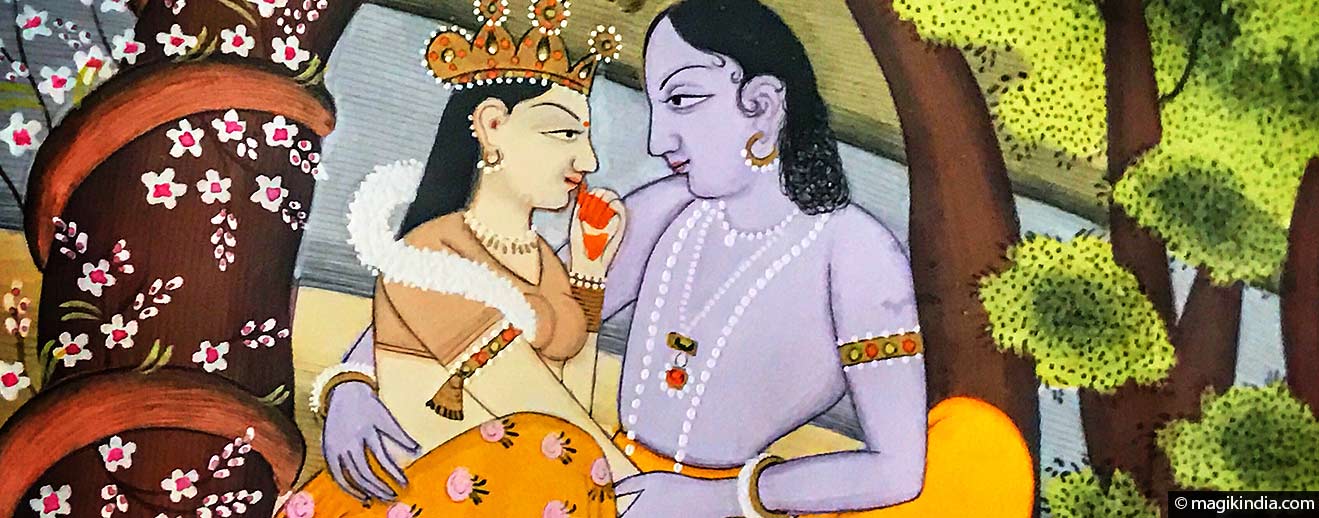
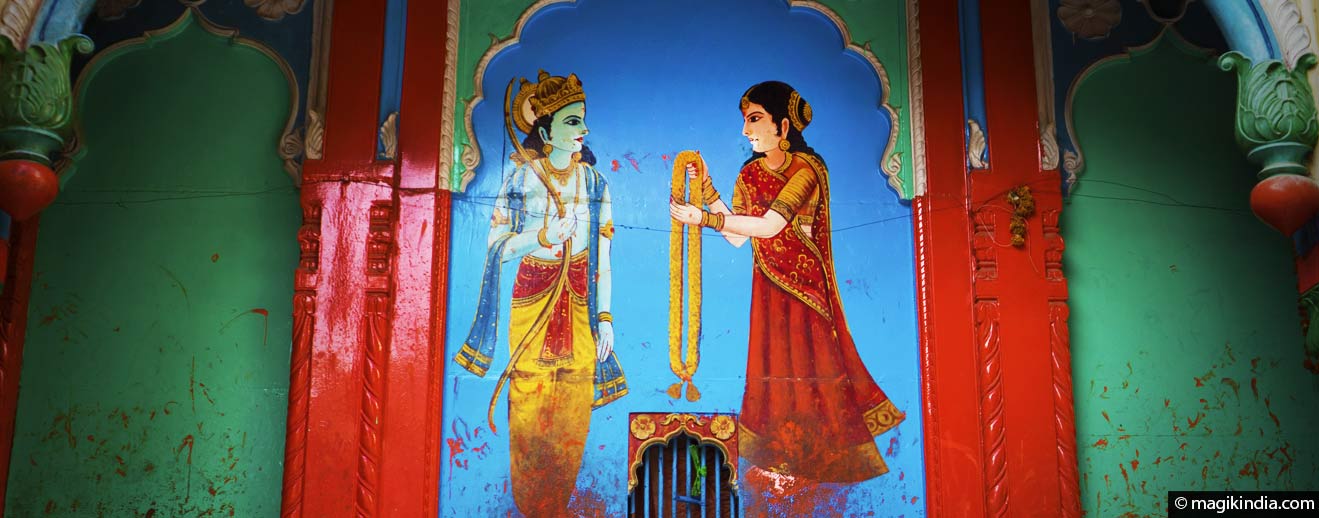
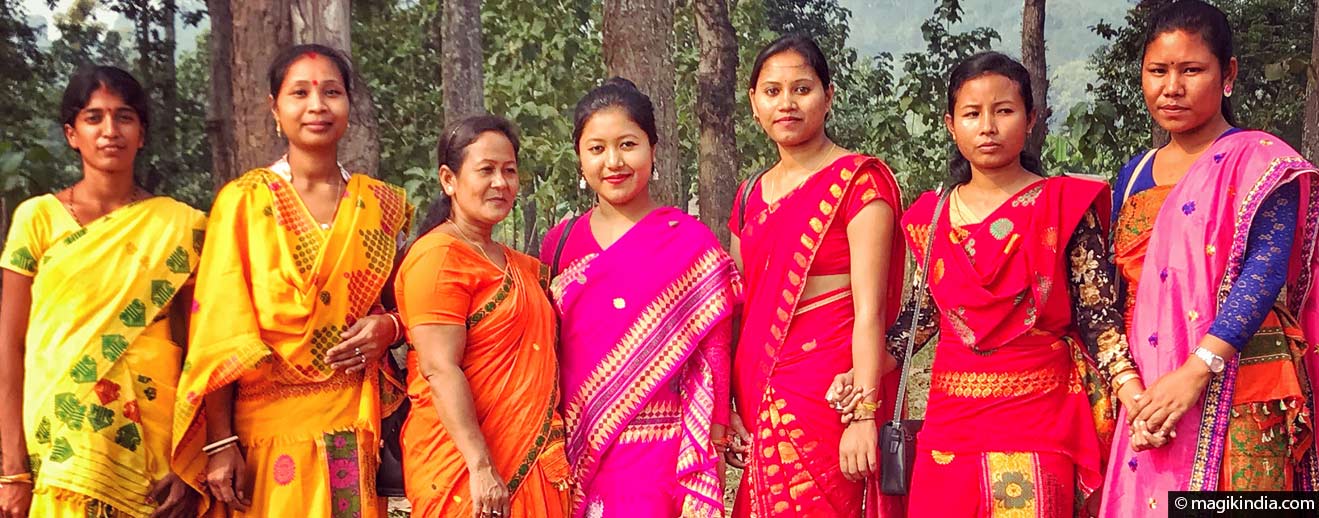
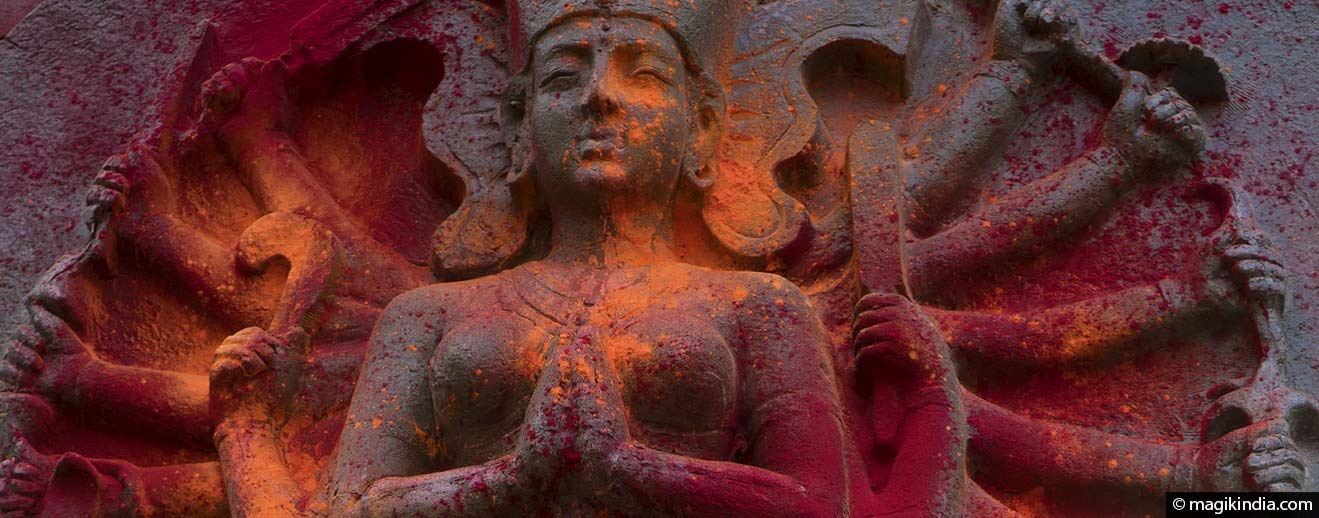
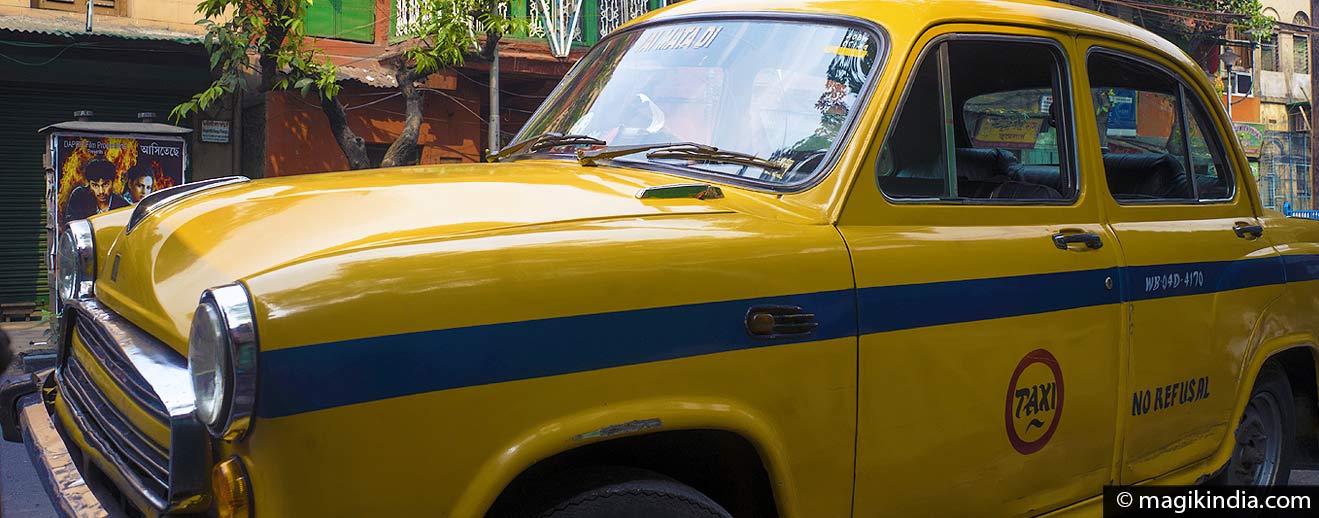
This is one of the most awaiting and expected holiday in India that is celebrated in such an unusual way!
thanks for your comment 🙂
Considered as one of the most auspicious festival for Hindus, Indians all across the world celebrate ‘Navaratri’ with full fervour and great enthusiasm. On each of these nine days.
Thank you for this great knowledge you share with us really good article.
Thanks Priya 🙂